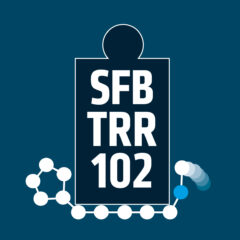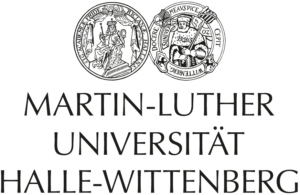Laura Scarbath-Evers on “Oligothiophenes on nano-structured surfaces: from single-molecule adsorption to multilayer thin film morphology ”
and Martin Kordts on “The effect of multiple compressions/expansions on interfacial morphology of hydrophobins”
Location: Martin-Luther-Universität Halle-Wittenberg Von-Danckelmann-Platz 3, SR 1.09 06120 Halle (Saale) Time: 3.30pm - 5.00pm Link to Google-Maps
Abstracts
Oligothiophenes on nano-structured surfaces: from single-molecule adsorption to multilayer thin film morphology
Laura Katharina Scarbath-Evers
We investigate the transition from single oligothiophene molecules to oligothiophene layers on nanostructured gold surfaces using full density functional theory (DFT) calculations as well as hybrid quantum mechanics/molecular mechanics (QM/MM) approaches.
The oligothiophene α-sexithiophene (α-6T) is an organic semiconductor that has already found application in electronic devices, such as organic thin film transistors. However, an optimization of the device performance requires a detailed understanding of the interplay between the packing structure of the molecules and their electronic properties.
On the one hand, we focus on how the competition between molecule-surface and molecule-molecule interactions determines the interface morphology of several organic layers. Our results reveal that the presence of the surface mainly affects the structure of the first layer whereas already in the second layer the transition from the flat lying monolayer structure, enforced by the surface, to the staggered bulk structure of α-6T occurs.
On the other hand, we investigate in detail how the molecule-metal interactions determine the structure as well as preferred adsorption sites of α-6T single molecules on reconstructed surfaces. So far, theoretical studies of organic adsorbates on metal surfaces have focused on adsorption processes on ideal surfaces. However, many surfaces exhibit complex reconstructions leading to large unit cells that are challenging for surface science studies.
We find that due to its corrugation pattern the reconstructed Au(100) surface offers a wide range of adsorption sites than can be broadly classified into on-ridge and in-valley types with energetic adsorption preferences for the latter. Surprisingly, when initially placed on an energetically ill-favored on-ridge position the molecule strongly alters the surface reconstruction and creates itself an energetically more suitable adsorption environment. The ability of the substrate to adapt in such a way to the molecular adsorption proofs the necessity to explicitly include the surface reconstruction into the theoretical description of adsorption processes.





One thought on “Doctoral students seminar (May 22, 2018)”